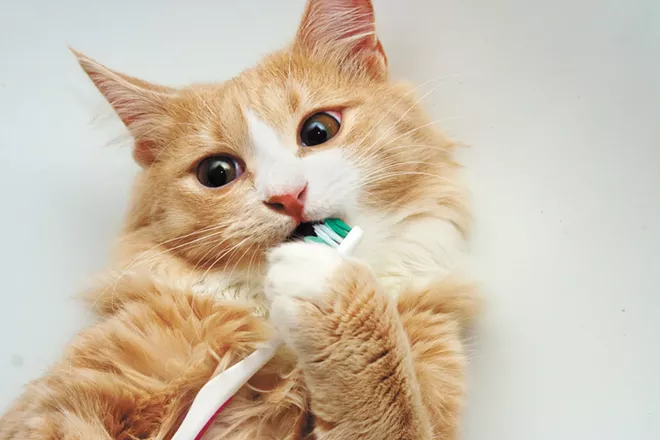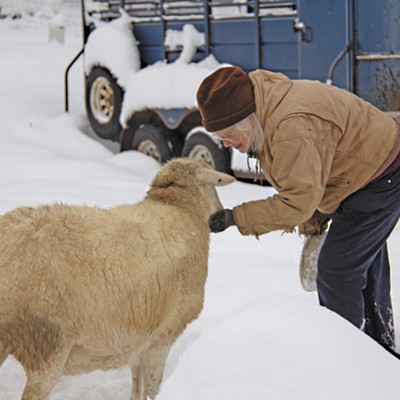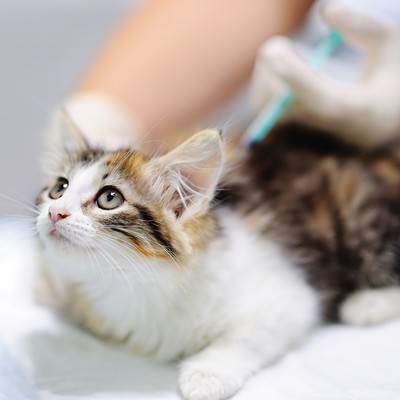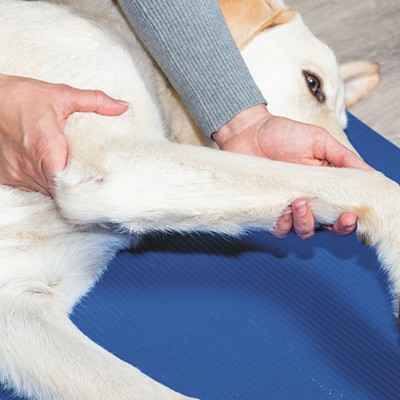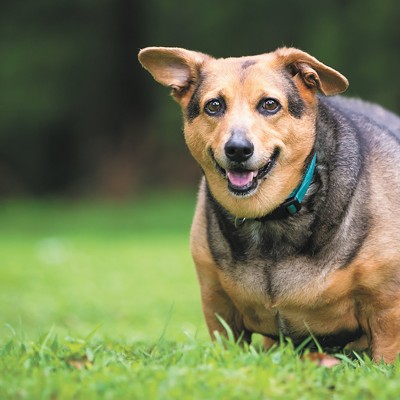Just like in their human companions, pets' teeth can develop plaque and tartar buildup that can lead to health problems. While dogs and cats don't get cavities exactly like humans, weak enamel can lead to tooth fractures that cause severe pain, as well as infections that can be deadly if bacteria spread to vital organs. Dental disease can also lead to gum recession and bone loss.
The worst part is, this could all be prevented by taking just a few minutes to brush at least two or three times per week. It seems even well-meaning pet owners could do a better job — roughly 85 percent of animals brought to Washington State University's Veterinary Teaching Hospital have some form of dental disease. Maybe that's because it's hard to know how to go about brushing your pet's teeth. The good news is, it's probably a lot easier than you imagine. So let's get started.
Open Wide
Brushing your pet's teeth is quicker than brushing your own, but you'll need some supplies. Special toothbrushes and toothpaste approved for use in dogs or cats can be purchased from a veterinarian. Note that human toothpaste can be toxic to pets that swallow it, and there could be ingredients in pet toothpaste your animal is allergic to, so be sure to check the label.Put some toothpaste on the brush, and then concentrate your efforts on the outside of the pet's top and bottom teeth, as that is where most buildup is located. Brushing parallel with the gumline has been shown to be the most effective way to brush in pets.
In addition to brushing, also take a look at the label on your pet's food. The Veterinary Oral Health Council's light blue seal indicates the food helps control the buildup of plaque and tartar.
Some treats are also designed to help scrape away plaque down the gumline. Even eating kibble has shown to help remove tartar and result in healthier teeth. But be aware that deer antlers, some raw hides, and plastic bones and toys may be hard and cause trauma to teeth, so don't use these with pets experiencing dental issues.
Sniffing Out Dental Disease
Keeping track of your pet's teeth by periodically taking a photo can help document dental health over time. Dogs with tooth pain will likely show irritation and may shake their head or paw at their mouth. Also, be aware that dental disease is more common in certain breeds of dogs with short noses and compact mouths — think Boston terriers and pugs. In their small mouths, the teeth are often not lined up, resulting in plaque and tartar buildup, making tooth brushing all the more important.
Young cats are also often prone to dental disease and complications, but given their survival instincts to not show pain, cats are much more likely to have dental disease that goes unnoticed.
However, in both dogs and cats, halitosis, or smelly breath, is often the easiest way to detect dental disease. So keep a nose out for tooth troubles, and remember brushing just a few times a week will help keep your pet happy and healthy.
Jessica Bell is an assistant professor at WSU College of Veterinary Medicine and a small animal veterinarian in community practice at WSU's Veterinary Teaching Hospital.
CORRECTION: A previous version of this article stated that bacteria can "spread to organs like the heart and kidneys" when, in fact, new research suggests that bacteria may not travel to the heart in cases of dental infection.
